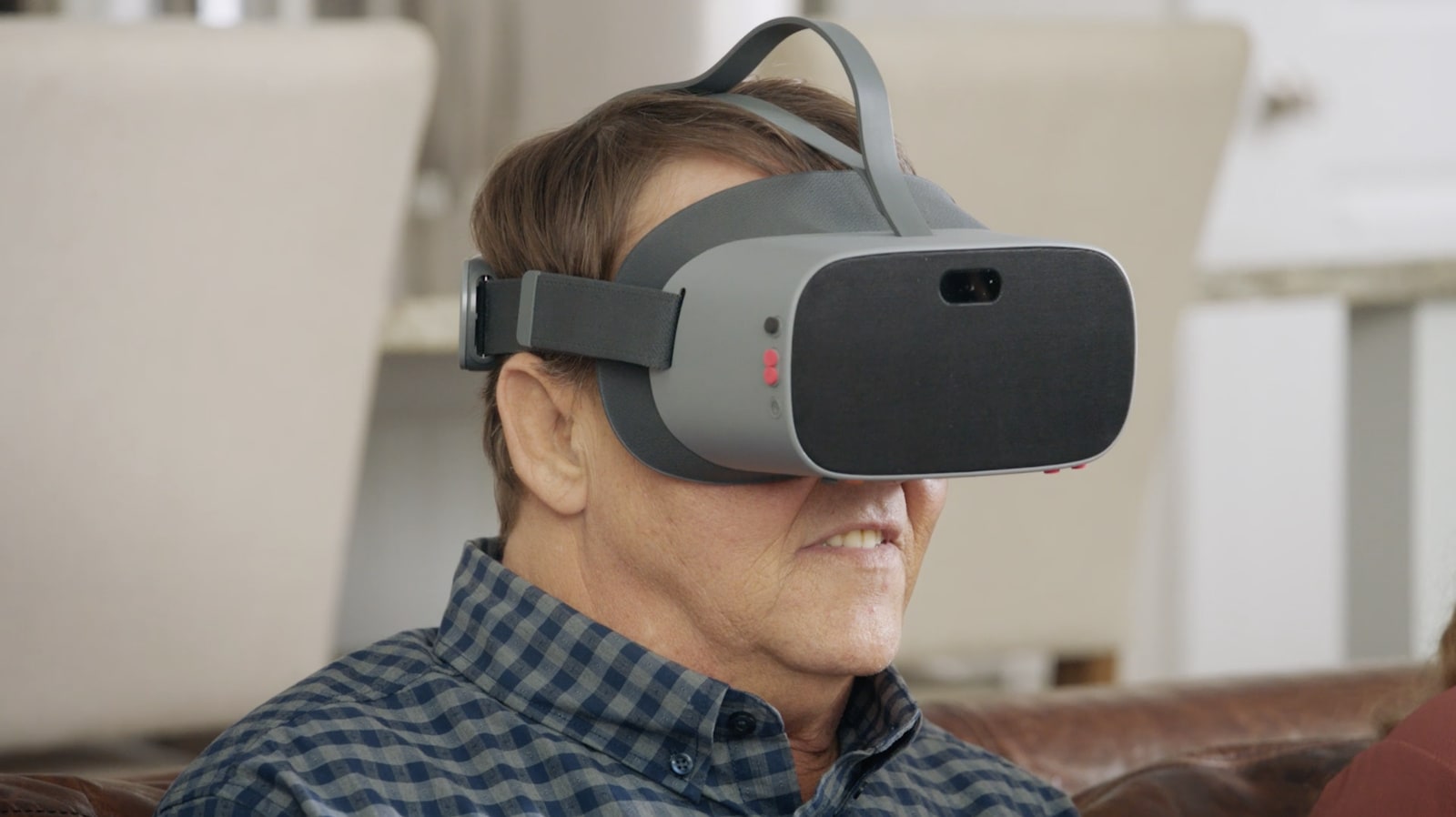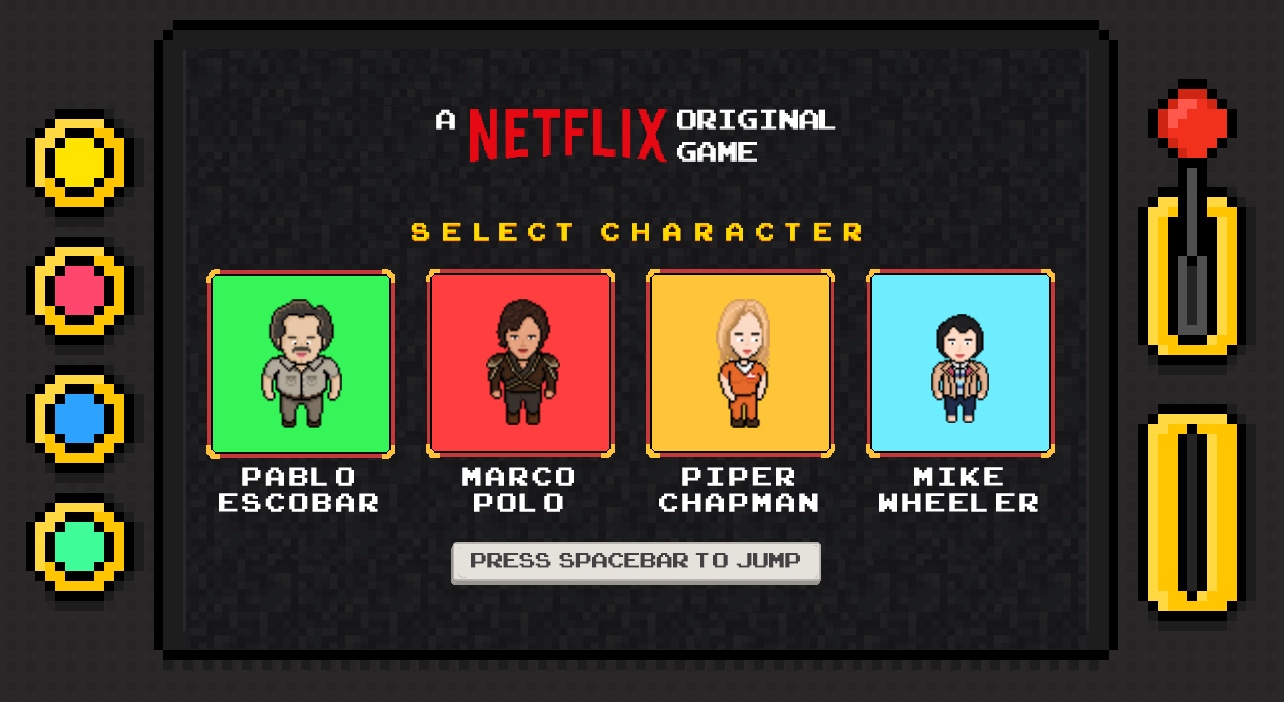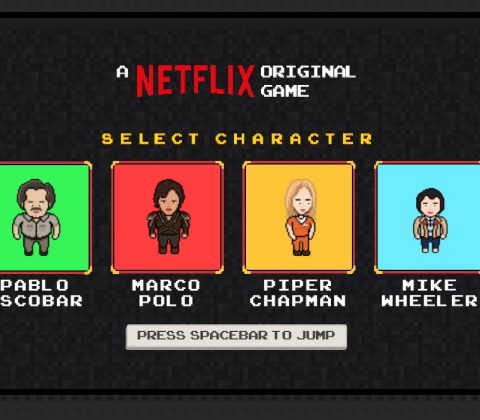Posts Tagged: made
Japan’s SLIM lunar lander made it to the moon, but it’ll likely die within hours
Japan has become the fifth country to successfully land on the moon after confirming today that its SLIM lander survived its descent to the surface — but its mission is likely to be short lived. JAXA, the Japanese space agency, says the spacecraft is having problems with its solar cell and is unable to generate electricity. In its current state, the battery may only have enough juice to keep it running a few more hours.
Based on how the other instruments are functioning, JAXA said in a press conference this afternoon that it’s evident SLIM did make a soft landing. The spacecraft has been able to communicate with Earth and receive commands, but is operating on a low battery. It’s unclear what exactly the issue with the solar cell is beyond the fact that it’s not functioning.
There’s a chance that the panels are just not facing the right direction to be receiving sunlight right now, which would mean it could start charging when the sun changes position. But, JAXA says it needs more time to understand what has happened. LEV-1 and LEV-2, two small rovers that accompanied SLIM to the moon, were able to successfully separate from the lander as planned before it touched down, and so far appear to be in working condition.
JAXA says it’s now focusing on maximizing the operational time it has left with SLIM to get as much data as possible from the landing. SLIM — the Smart Lander for Investigating Moon — has also been called the “Moon Sniper” due to its precision landing technology, which is supposed to put it within 100 meters of its target, the Shioli crater. The agency is planning to hold another press conference next week to share more updates.
Though its time may be running out, SLIM’s landing was still a major feat. Only four other countries have successfully landed on the moon: the US, China, India and Russia. The latest American attempt, the privately led Peregrine Mission One, ended in failure after the spacecraft began leaking propellant shortly after its January 8 launch. It managed to hang on for several more days and even reached lunar distance, but had no chance of a soft landing. Astrobotic, the company behind the lander, confirmed last night that Peregrine made a controlled reentry, burning up in Earth’s atmosphere over the South Pacific.
This article originally appeared on Engadget at https://www.engadget.com/japans-slim-lunar-lander-made-it-to-the-moon-but-itll-likely-die-within-hours-195431502.html?src=rss
Engadget is a web magazine with obsessive daily coverage of everything new in gadgets and consumer electronics
Researchers made VR goggles for mice to study how their brains respond to swooping predators
Believe it or not, scientists have been using virtual reality setups to study brain activity in lab mice for years. In the past, this has been done by surrounding the mice with flat displays — a tactic that has obvious limitations for simulating a realistic environment. Now, in an attempt to create a more immersive experience, a team at Northwestern University actually developed tiny VR goggles that fit over a mouse’s face… and most of its body. This has allowed them to simulate overhead threats for the first time, and map the mice’s brain activity all the while.
The system, dubbed Miniature Rodent Stereo Illumination VR (or iMRSIV), isn’t strapped onto the mouse’s head like a VR headset for humans. Instead, the goggles are positioned at the front of a treadmill, surrounding the mouse’s entire field of view as it runs in place. “We designed and built a custom holder for the goggles,” said John Issa, the study’s co-first author. “The whole optical display — the screens and the lenses — go all the way around the mouse.”
In their tests, the researchers say the mice appeared to take to the new VR environment more quickly than they did with the past setups. To recreate the presence of overhead threats, like birds swooping in for a meal, the team projected expanding dark spots at the tops of the displays. The way they react to threats like this “is not a learned behavior; it’s an imprinted behavior,” said co-first author Dom Pinke. “It’s wired inside the mouse’s brain.”
With this method, the researchers were able to record both the mice’s outward physical responses, like freezing in place or speeding up, and their neural activity. In the future, they may flip the scenario and let the mice act as predators, to see what goes on as they hunt insects. A paper on the technique was published in the journal Neuron on Friday.
This article originally appeared on Engadget at https://www.engadget.com/researchers-made-vr-goggles-for-mice-to-study-how-their-brains-respond-to-swooping-predators-215927095.html?src=rss
Engadget is a web magazine with obsessive daily coverage of everything new in gadgets and consumer electronics
I wore smart glasses that made me excited for the future
I’m really looking forward to having true smart glasses on my face, and wearing the TCL RayNeo Nxtwear S reminded me why I’m so excited.
Digital Trends
Hitting the Books: Why we haven’t made the ‘Citizen Kane’ of gaming
Steven Spielberg’s wholesome sci-fi classic, E.T. the Extra-Terrestrial, became a cultural touchstone following its release in 1982. The film’s hastily-developed (as in, “you have five weeks to get this to market”) Atari 2600 tie-in game became a cultural touchstone for entirely different reasons.
In his new book, The Stuff Games Are Made Of, experimental game maker and assistant professor in design and computation arts at Concordia University in Montreal, Pippin Barr deconstructs the game design process using an octet of his own previous projects to shed light on specific aspects of how games could better be put together. In the excerpt below, Dr. Barr muses in what makes good cinema versus games and why the storytelling goals of those two mediums may not necessarily align.
Excerpted from The Stuff Games Are Made Of by Pippin Barr. Reprinted with permission from The MIT Press. Copyright 2023.
In the Atari 2600 video game version of the film E.T. the Extra-Terrestrial (Spielberg 1982), also called E. T. the Extra-Terrestrial (Atari 1982), the defining experience is falling into a pit. It’s cruelly fitting, then, that hundreds of thousands of the game’s physical cartridges were buried in a landfill in 1983. Why? It was one of the most spectacular failures in video game history. Why? It’s often put front and center as the worst game of all time. Why? Well, when you play it, you keep falling into a pit, among other things …
But was the video game E.T. so terrible? In many ways it was a victim of the video game industry’s voracious hunger for “sure fire” blockbusters. One strategy was to adapt already-popular movies like Raiders of the Lost Ark or, yes, E.T. the Extra-Terrestrial. Rushed to market with a development time of only five weeks, the game inevitably lacked the careful crafting of action-oriented gameplay backed by audience testing that other Atari titles had. I would argue, though, that its creator, Howard Scott Warshaw, found his way into a more truthful portrayal of the essence of the film than you might expect.
Yes, in the game E.T. is constantly falling into pits as he flees scientists and government agents. Yes, the game is disorienting in terms of understanding what to do, with arcane symbols and unclear objectives. But on the other hand, doesn’t all that make for a more poignant portrayal of E.T.’s experience, stranded on an alien planet, trying to get home? What if E.T. the Extra-Terrestrial is a good adaptation of the film, and just an unpopular video game?
The world of video games has admired the world of film from the beginning. This has led to a long-running conversation between game design and the audiovisual language of cinema, from cutscenes to narration to fades and more. In this sense, films are one of the key materials games are made of. However, even video games’ contemporary dominance of the revenue competition has not been quite enough to soothe a nagging sense that games just don’t measure up. Roger Ebert famously (and rather overbearingly) claimed that video games could “never be art,” and although we can mostly laugh about it now that we have games like Kentucky Route Zero and Disco Elysium, it still hurts. What if Ebert was right in the sense that video games aren’t as good at being art as cinema is?
Art has seldom been on game studios’ minds in making film adaptations. From Adventures of Tron for the Atari 2600 to Toy Story Drop! on today’s mobile devices, the video game industry has continually tried for instant brand recognition and easy sales via film. Sadly, the resulting games tend just to lay movie visuals and stories over tried-and-true game genres such as racing, fighting, or match 3. And the search for films that are inherently “video game-y” hasn’t helped much either. In Marvel’s Spider-Man: Miles Morales, Spider-Man ends up largely as a vessel for swinging and punching, and you certainly can’t participate in Miles’s inner life. So what happened to the “Citizen Kane of video games”?
A significant barrier has been game makers’ obsession with the audiovisual properties of cinema, the specific techniques, rather than some of the deeply structural or even philosophical opportunities. Film is exciting because of the ways it unpacks emotion, represents space, deploys metaphor, and more. To leverage the stuff of cinema, we need to take a close look at these other elements of films and explore how they might become the stuff of video games too. One way to do that in an organized way is to focus on adaptation, which is itself a kind of conversation between media that inevitably reveals much about both. And if you’re going to explore film adaptation to find the secret recipe, why not go with the obvious? Why not literally make Citizen Kane (Welles 1941) into a video game? Sure, Citizen Kane is not necessarily the greatest film of all time, but it certainly has epic symbolic value. Then again, Citizen Kane is an enormous, complex film with no car chases and no automatic weapons. Maybe it’s a terrible idea.
As video games have ascended to a position of cultural and economic dominance in the media landscape, there has been a temptation to see film as a toppled Caesar, with video games in the role of a Mark Antony who has “come to bury cinema, not to praise it.” But as game makers, we haven’t yet mined the depths offered by cinema’s rich history and its exciting contemporary voices. Borrowing cinema’s visual language of cameras, points of view, scenes, and so on was a crucial step in figuring out how video games might be structured, but the stuff of cinema has more to say than that. Citizen Kane encourages us to embrace tragedy and a quiet ending. The Conversation shows us that listening can be more powerful than action. Beau Travail points toward the beauty of self-expression in terrible times. Au Hasard Balthazar brings the complex weight of our own responsibilities to the fore.
There’s nothing wrong with an action movie or an action video game, but I suggest there’s huge value in looking beyond the low-hanging fruit of punch-ups and car chases to find genuinely new cinematic forms for the games we play. I’ll never play a round of Combat in the same way, thanks to the specter of Travis Bickle psyching himself up for his fight against the world at large. It’s time to return to cinema in order to think about what video games have been and what they can be. Early attempts to adapt films into games were perhaps “notoriously bad” (Fassone 2020), but that approach remains the most direct way for game designers to have a conversation with the cinematic medium and to come to terms with its potential. Even if we accept the idea that E.T. was terrible, which I don’t, it was also different and new.
This is bigger than cinema, though, because we’re really talking about adaptation as a form of video game design. While cinema (and television) is particularly well matched, all other media from theater to literature to music are teeming with ideas still untried in the youthful domain of video games. One way to fast-track experimentation is of course to adapt plays, poems, and songs. To have those conversations. There can be an air of disdain for adaptations compared to originals, but I’m with Linda Hutcheon (2012, 9) who asserts in A Theory of Adaptation that “an adaptation is a derivation that is not derivative — a work that is second without being secondary.” As Jay Bolter and Richard Grusin (2003, 15) put it, “what is new about new media comes from the particular ways in which they refashion older media.” This is all the more so when the question is how to adapt a specific work in another medium, where, as Hutcheon claims, “the act of adaptation always involves both (re-)interpretation and then (re-)creation.” That is, adaptation is inherently thoughtful and generative; it forces us to come to terms with the source materials in such a direct way that it can lay our design thinking bare—the conversation is loud and clear. As we’ve seen, choosing films outside the formulas of Hollywood blockbusters is one way to take that process of interpretation and creation a step further by exposing game design to more diverse cinematic influences.
Video games are an incredible way to explore not just the spaces we see on-screen, but also “the space of the mind.” When a game asks us to act as a character in a cinematic world, it can also ask us to think as that character, to weigh our choices with the same pressures and history they are subject to. Hutcheon critiques games’ adaptive possibilities on the grounds that their programming has “an even more goal- directed logic than film, with fewer of the gaps that film spectators, like readers, fill in to make meaning.” To me, this seems less like a criticism and more like an invitation to make that space. Quiet moments in games, as in films, may not be as exhilarating as a shoot-out, but they can demand engagement in a way that a shoot-out can’t. Video games are ready for this.
The resulting games may be strange children of their film parents, but they’ll be interesting children too, worth following as they grow up. Video game film adaptations will never be films, nor should they be—they introduce possibilities that not only recreate but also reimagine cinematic moments. The conversations we have with cinema through adaptation are ways to find brand new ideas for how to make games. Even the next blockbuster.
Yeah, cinema, I’m talkin’ to you.
This article originally appeared on Engadget at https://www.engadget.com/hitting-the-books-the-stuff-games-are-made-of-pippin-barr-mit-press-143054954.html?src=rss
Engadget is a web magazine with obsessive daily coverage of everything new in gadgets and consumer electronics
I almost made a terrible mistake when I first used the Galaxy Z Fold 5
I don’t want you to make the same mistake I almost did about the Samsung Galaxy Z Fold 5, and that’s to treat it as a boring update. It’s absolutely not.
Digital Trends
This Pixel Watch 2 leak just made it the 2023 smartwatch I can’t wait for
One of the first big Pixel Watch 2 leaks just dropped. And if this one is true, I already can’t wait to get my hands on Google’s next smartwatch.
Digital Trends
The Morning After: Microsoft’s new Xbox controller is partially made of ground-up CDs
Microsoft has announced a new, slightly more sustainable Xbox controller. Arriving as an Earth Day promotion, the Xbox Remix Special Edition wireless controller uses recycled materials from old gamepads, auto headlight covers and reclaimed CDs (among other sources) to give each accessory a unique look – but no special functionality. I’m totally OK with that.
Microsoft describes the combination of recycled resins with regrind as creating “custom, earth-tone colors with subtle variations, swirling, markings, and texturing – giving each Remix Special Edition controller its own look and feel.” While it’s hard to see that on the press images, it should result in a satisfying textured pattern on the bumpers and side grip. The company also bundles an Xbox Rechargeable Battery Pack with each gamepad, ensuring fewer AA batteries head to landfills.
– Mat Smith
The Morning After isn’t just a newsletter – it’s also a daily podcast. Get our daily audio briefings, Monday through Friday, by subscribing right here.
The biggest stories you might have missed
We can build immortal celebrities from ChatGPT and their existing back catalogs
Catan creator Klaus Teuber has passed away at 70
Motorola's Edge 40 Pro offers 125W fast charging and a 165Hz screen
Microsoft's Surface Thunderbolt 4 Dock is a high-speed laptop and tablet hub
Hyundai’s Ioniq 6 is a value-packed EV sedan
Jury reduces Tesla's $ 137 million racism lawsuit penalty to $ 3.2 million
Apple's Mac Mini M2 is back on sale for $ 549
Biden says it 'remains to be seen' if AI is dangerous
The president has met with advisors to discuss the 'risks and opportunities' of AI.
According to reports, President Joe Biden has met with his science and technology advisors, which include academics and executives from Google and Microsoft, to discuss the "risks and opportunities" of artificial intelligence. While the meeting is unlikely to lead to a ChatGPT ban like in Italy, the president doesn't seem to be convinced that AI is perfectly safe at this point in time. When asked if AI is dangerous, he responded: "It remains to be seen. Could be." He told the group: "Tech companies have a responsibility, in my view, to make sure their products are safe before making them public.”
The best e-readers for 2023
Kindles are no longer your only options.
After staring at screens all day, you deserve a break. E-readers are the perfect way to unwind with a book. They're easy on your eyes, portable and have a huge selection of titles. Amazon still dominates in this market, but that doesn’t mean there aren’t worthy competitors. We tested out some of the best e-readers available – here are our picks.
Virgin Orbit files for bankruptcy protection as it seeks a buyer
The company recently shut down its space launch operations.
Virgin Orbit has filed for Chapter 11 bankruptcy protection a few days after officially shutting down its space launch operations. The private space company has been burning money for a while now and reported a loss of $ 49.2 million in its last fiscal quarter. Its financial issues came to a head after its Start Me Up mission didn't quite go as expected. It was supposed to be a historic event as the first orbital launch from UK soil, but it failed to reach orbit due to a dislodged fuel filter.
Nintendo offers unlimited free repairs for Joy-Con drift issue in Europe
The company will fix 'drifting' Joy-Cons at no cost even if they're no longer under warranty.
Nintendo has been repairing Switch players' Joy-Con "drift" issues for free, even if they're no longer under warranty, in North America since 2019. It then launched the same program in France and Latin America. Now, the gaming giant has expanded its free unlimited repair service for drifting Joy-Cons to the European Economic Area (EEA), UK and Switzerland "until further notice." On its UK website, the company said it's offering repairs in those areas "for responsiveness syndrome relating to control sticks." And, it will fix the known problem for users even if it's "caused by wear and tear."
This article originally appeared on Engadget at https://www.engadget.com/the-morning-after-microsofts-new-xbox-controller-is-partially-made-of-ground-up-cds-111501121.html?src=rss
Engadget is a web magazine with obsessive daily coverage of everything new in gadgets and consumer electronics
Epic made a Rivian R1T demo to show off its latest Unreal Engine 5 tools
In 2020, Epic Games publicly demoed Unreal Engine 5 for the first time. Nearly three years later, gamers are still waiting for the tech to go mainstream. Outside of Fortnite and The Matrix Awakens, there aren’t any UE5 games you can play right now, and the first salvo probably won’t arrive until the end of the year at the earliest. None of that stopped Epic from showcasing the engine’s latest capabilities with a handful of new demos during its recent State of Unreal keynote at GDC 2023.
Arguably the most impressive one saw Senua’s Saga: Hellblade 2 developer Ninja Theory show off Epic’s new MetaHuman Animator. The tool promises to make realistic facial capture accessible to indie developers by allowing them to use an iPhone, instead of dedicated equipment, to capture facial performances. As you can see from the two demos Epic shared, the tool makes it possible to quickly and accurately transform a closeup video of an actor into something a studio can use in-game. Epic said the animator would launch this summer.
Separately, Epic showed off some of the enhancements coming to Unreal Engine 5.2 with a demo that featured, of all things, a digital recreation of Rivian’s R1T electric truck. The EV turned out to be the perfect showcase for UE 5’s new Substrate shading system. The technology allows artists to create different shading models and layer them as they see fit. In the demo, Epic gave the R1T an opal body to show how Substrate can allow different material layers to interact with one another without creating lighting artifacts. The demo was also a showcase for Epic’s new set of Procedural Content Generation tools. They allow artists to create expansive, highly detailed levels from a small set of hand-crafted assets.
If all goes according to plan, it won’t be much longer before the first slate of Unreal Engine 5 games arrive. Provided it’s not delayed again, Stalker 2: Heart of Chornobyl is slated to release this year. Lords of the Fallen and Black Myth: Wukong, two other UE5 projects, don’t have a release date yet but have been in development for a few years now.
This article originally appeared on Engadget at https://www.engadget.com/epic-made-a-rivian-r1t-demo-to-show-off-its-latest-unreal-engine-5-tools-214300199.html?src=rss
Engadget is a web magazine with obsessive daily coverage of everything new in gadgets and consumer electronics
Using the OnePlus 10 Pro again made me worried about the OnePlus 11
With less than a month to go before the OnePlus 11 launch, I decided to revisit the OnePlus 10 Pro. And now I’m really worried.
Digital Trends
Sonicware’s latest groovebox is made for lofi beats
You know that lofi beats have taken over when companies are designing entire instruments around them. Sonicware has introduced the Liven Lofi-12, a groovebox devoted to producing subdued tracks. The machine centers around a 16-bit, 12/24kHz sampling engine with a 12-bit sampler mode that gives any sound that “genuine” lofi vibe. You can’t just recreate the effect with a bit crusher or similar tools, the company claims.
You’ll also find a “laid-back” knob to introduce a delay, as well as 11 track and eight master effects that can introduce cassette or vinyl simulations as well as common modifications like distortion, high/low pass filters and reverb. Pattern presets help you get started, too. A four-track sequencer includes options to lock parameters and sound changes. You’ll find MIDI and 3.5mm ports for both input and output. You can use the groovebox with either an AC charger (not included) or AA batteries.
The Liven Lofi-12 is available now for $ 239. You may want to spring for Sonicware’s SmplTrek if you’re more interested in a general-purpose beatmaker than devoting your energy to a specific sound. This is more feature-laden than rivals like the Korg Volca Sample 2, mind you, and may be just what you’re looking for if you’re hoping to create tunes for one of the trendiest genres on YouTube.
T-Mobile made a $325 suitcase that you may actually want to buy
T-Mobile has been pushing its customers to travel, and now its limited-edition smart suitcase allows them to do just that.
Digital Trends
Hitting the Books: The women who made ENIAC more than a weapon
After Mary Sears and her team had revolutionized the field of oceanography, but before Katherine G. Johnson, Dorothy Vaughan and Mary Jackson helped put John Glenn into orbit, a cadre of women programmers working for the US government faced an impossible task: train ENIAC, the world's first modern computer, to do more than quickly calculate artillery trajectories. Though successful — and without the aid of a guide or manual no less — their names and deeds were lost to the annals of history, until author Kathy Kleiman, through a Herculean research effort of her own, brought their stories to light in Proving Ground: The Untold Story of the Six Women Who Programmed the World’s First Modern Computer.
Excerpted from the book Proving Ground: The Untold Story of the Six Women Who Programmed the World’s First Modern Computer by Kathy Kleiman. Copyright © 2022 by First Byte Productions, LLC. Reprinted with permission of Grand Central Publishing. All rights reserved.
Demonstration Day, February 15, 1946
The Moore School stood ready as people began to arrive by train and trolley. John and Pres, as well as the engineers and deans and professors of the university, wore their best suits and Army officers were in dress uniform with their medals gleaming. The six women wore their best professional skirt suits and dresses.
Kay and Fran manned the front door of the Moore School. As the scientists and technologists arrived, some from as far as Boston, the two women welcomed them warmly. They asked everyone to hang up their heavy winter coats on the portable coat racks that Moore School staff had left nearby. Then they directed them down the hall and around the corner to the ENIAC room.
Just before 11:00 a.m., Fran and Kay ran back to be in the ENIAC room when the demonstration began.
As they slid into the back of the room, everything was at the ready. At the front of the great ENIAC U, there was space for some speakers, a few rows of chairs, and plenty of standing room for invited guests and ENIAC team members. Across the room, Marlyn, Betty, and Jean stood in the back and the women smiled to each other. Their big moment was about to begin. Ruth stayed outside, pointing late arrivals in the right direction.
The room was packed and was filled with an air of anticipation and wonder as people saw ENIAC for the first time.
Demonstration Day started with a few introductions. Major General Barnes started with the BRL officers and Moore School deans and then presented John and Pres as the co-inventors. Then Arthur came to the front of the room and introduced himself as the master of ceremonies for the ENIAC events. He would run five programs, all using the remote control box he held in his hand.
The first program was an addition. Arthur hit one of the but-tons and the ENIAC whirled to life. Then he ran a multiplication. His expert audience knew that ENIAC was calculating it many times faster than any other machine in the world. Then he ran the table of squares and cubes, and then sines and cosines. So far, Demonstration Day was the same as the one two weeks earlier, and for this sophisticated audience, the presentation was pretty boring.
But Arthur was just getting started and the drama was about to begin. He told them that now he would run a ballistics trajectory three times on ENIAC.
He pushed the button and ran it once. The trajectory “ran beautifully,” Betty remembered. Then Arthur ran it again, a version of the trajectory without the punched cards printing, and it ran much faster. Punched cards actually slowed things down a little bit.
Then Arthur pointed everyone to the grids of tiny lights at the top of the accumulators and urged his attendees to look closely at them in the moments to come. He nodded to Pres, who stood against the wall, and suddenly Pres turned off the lights. In the black room, only a few small status lights were lit on the units of ENIAC. Everything else was in darkness.
With a click of the button, Arthur brought the ENIAC to life. For a dazzling twenty seconds, the ENIAC lit up. Those watching the accumulators closely saw the 100 tiny lights twinkle as they moved in a flash, first going up as the missile ascended to the sky, and then going down as it sped back to earth, the lights forever changing and twinkling. Those twenty seconds seemed at once an eternity and instantaneous.
Then the ENIAC finished, and darkness filled the room again. Arthur and Pres waited a moment, and then Pres turned on the lights and Arthur announced dramatically that ENIAC had just completed a trajectory faster than it would take a missile to leave the muzzle of artillery and hit its target. “Everybody gasped.”
Less than twenty seconds. This audience of scientists, technologists, engineers, and mathematicians knew how many hours it took to calculate a differential calculus equation by hand. They knew that ENIAC had calculated the work of a week in fewer than two dozen seconds. They knew the world had changed.
Climax complete, everyone in the room was beaming. The Army officers knew their risk had paid off. The ENIAC engineers knew their hardware was a success. The Moore School deans knew they no longer had to be worried about being embarrassed. And the ENIAC Programmers knew that their trajectory had worked perfectly. Years of work, effort, ingenuity, and creativity had come together in twenty seconds of pure innovation.
Some would later call this moment the birth of the “Electronic Computing Revolution.” Others would soon call it the birth of the Information Age. After those precious twenty seconds, no one would give a second look to the great Mark I electromechanical computer or the differential analyzer. After Demonstration Day, the country was on a clear path to general- purpose, programmable, all- electronic computing. There was no other direction. There was no other future. John, Pres, Herman, and some of the engineers fielded questions from the guests, and then the formal session finished. But no one wanted to leave. Attendees surrounded John and Pres, Arthur and Harold.
The women circulated. They had taken turns running punched cards through the tabulator and had stacks of trajectory printouts to share. They divided up the sheets and moved around the room to hand them out. Attendees were happy to receive a trajectory, a souvenir of the great moment they had just witnessed.
But no attendee congratulated the women. Because no guest knew what they had done. In the midst of the announcements and the introductions of Army officers, Moore School deans, and ENIAC inventors, the Programmers had been left out. “None of us girls were ever introduced as any part of it” that day, Kay noted later.
Since no one had thought to name the six young women who programmed the ballistics trajectory, the audience did not know of their work: thousands of hours spent learning the units of ENIAC, studying its “direct programming” method, breaking down the ballistics trajectory into discrete steps, writing the detailed pedaling sheets for the trajectory program, setting up their program on ENIAC, and learning ENIAC “down to a vacuum tube.” Later, Jean said, they “did receive a lot of compliments” from the ENIAC team, but at that moment they were unknown to the guests in the room.
And at that moment, it did not matter. They cared about the success of ENIAC and their team, and they knew they had played a role, a critical role, in the success of the day. This was a day that would go down in history, and they had been there and played an invaluable part.
Framework made a modular, repairable Chromebook
Framework, the company spearheading a new generation of modular, repairable products, has made a Chromebook. It teamed up with Google to produce a ChromeOS-friendly version of the standard Framework machine with the same promise of modularity and repairability.
Internally, the Framework Laptop Chromebook Edition comes with a 3:2, 2,256 x 1,504 display, a 12th-generation Core i5-1240, 8GB RAM and a 256GB SSD. You can order up to 64GB RAM and 1TB SSD, although you’re also at liberty to upgrade those components yourself at a later date.
You’ll also, as before, be able to spec the machine how you want, including USB-C, USB-A, MicroSD, HDMI, DisplayPort and Ethernet. Plus, if you're looking to bolster the storage beyond the SSD, you can buy dedicated storage expansion cards, blanked-out port modules that can hold a 250GB or 1TB of additional solid-state storage.
The one major change really is the fact that this model comes with the Titan C security chip baked into its chassis. It’s not clear yet if that’ll have any noticeable impact upon your ability to swap out the mainboard when it’s time to upgrade.
The Framework Laptop Chromebook Edition is available to pre-order in the US and Canada from today, with the base model priced at $ 999. Would-be buyers can expect their shipment in late November or early December, and folks are required to put down a $ 100 refundable deposit to hold their place in the shipment line.
Treat yourself, Gucci and Oura have made a $950 smart ring
The Oura Ring, a smart health-tracking ring for your finger, has been given a designer overhaul in a new partnership with Gucci.
Mobile | Digital Trends
EVs made up 65 percent of car sales in Norway last year
Electric vehicles accounted for nearly two-thirds of all new car sales in Norway this past year, according to newly published data from the country’s Road Federation. In 2021, Norwegian dealerships sold 176,276 cars, 65 percent of which were EVs. That’s an 11 percentage point increase from the year prior when they accounted for 54 percent of all new car sales.
The Tesla Model 3 was the most popular choice among new buyers followed by Toyota’s hybrid RAV4, the only car with an internal combustion engine to make the country’s top-ten best-selling list. Other notable cars to make the list include the Volkswagen ID.4 in third place and the Polestar 2 in the number 10 spot.
The Norwegian EV Association told Reuters electric vehicle sales could make up as much as 80 percent of the country’s total car market by 2022 — as long as chip shortages don’t cause further shipping delays. As in 2020, much of what’s driving EV adoption in Norway is the country’s generous subsidies. Car buyers don’t have to pay taxes imposed on traditional internal combustion engine vehicles when they buy an EV. In 2021, the country’s federal government missed out on approximately $ 3.41 billion in tax revenue to push forward on its plan to end all gasoline-powered car sales by 2025.
Oppo Air Glass avoids the one feature that made Google Glass so controversial
Oppo’s Air Glass wearable may remind you of Google Glass, but without a camera, they avoid the privacy complications of Google’s original smart glasses.
Wearables | Digital Trends
Hitting the Books: How Amazon’s aggressive R&D push made it an e-commerce behemoth
Amazon is the Standard Oil of the 21st century. Its business operations and global reach dwarf those of virtually every other company on the planet — and exceed the GDP of more than a few countries — illustrating the vital importance innovation has on the modern economy. In his latest book, The Exponential Age: How Accelerating Technology is Transforming Business, Politics and Society, author Azeem Azhar examines how the ever-increasing pace of technological progress is impacting, influencing — and often rebuilding — our social, political and economic mores from the ground up.
Excerpted from The Exponential Age: How Accelerating Technology is Transforming Business, Politics and Society by Azeem Azhar. Copyright © 2021 Azeem Azhar. Printed with permission of the publisher, Diversion Books. All rights reserved.
In 2020, Amazon turned twenty-six years old. Over the previous quarter of a century, the company had transformed shopping. With retail revenues in excess of $ 213 billion, it was larger than Germany’s Schwarz Gruppe, America’s Costco, and every British retailer. Only America’s Walmart, with more than half a trillion dollars of sales, was bigger. But Amazon was, by this time, far and away the world’s largest online retailer. Its online business was about eight times larger than Walmart’s. Amazon was more than just an online shop, however. Its huge operations in areas such as cloud computing, logistics, media, and hardware added a further $ 172 billion in sales.
At the heart of Amazon’s success is an annual research and development budget that reached a staggering $ 36 billion in 2019, and which is used to develop everything from robots to smart home assistants. This sum leaves other companies — and many governments — behind. It is not far off the UK government’s annual budget for research and development. The entire US government’s federal R&D budget for 2018 was only $ 134 billion.
Amazon spent more on R&D in 2018 than the US National Institutes of Health. Roche, the global pharmaceutical company renowned for its investment in research, spent a mere $ 12 billion in R&D in 2018. Meanwhile Tesco, the largest retailer in Britain — with annual sales in excess of £50 billion (approximately $ 70 billion) — had a research lab whose budget was in the “six figures” in 2016.
Perhaps more remarkable is the rate at which Amazon grew this budget. Ten years earlier, Amazon’s research budget was $ 1.2 billion. Over the course of the next decade, the firm increased its annual R&D budget by about 44 percent every year. As the 2010s went on, Amazon doubled down on its investments in research. In the words of Werner Vogels, the firm’s chief technology officer, if they stopped innovating they “would be out of business in ten to fifteen years.”
In the process, Amazon created a chasm between the old world and the new. The approach of traditional business was to rely on models that succeeded yesterday. They were based on a strategy that tomorrow might be a little different, but not markedly so.
This kind of linear thinking, rooted in the assumption that change takes decades and not months, may have worked in the past—but not anymore. Amazon understood the nature of the Exponential Age. The pace of change was accelerating; the companies that could harness the technologies of the new era would take off. And those that couldn’t keep up would be undone at remarkable speed.
This divergence between the old and the new is one example of what I call the “exponential gap.” On the one hand, there are technologies that develop at an exponential pace—and the companies, institutions, and communities that adapt to or harness those developments. On the other, there are the ideas and norms of the old world. The companies, institutions, and communities that can only adapt at an incremental pace. These get left behind—and fast.
The emergence of this gap is a consequence of exponential technology. Until the early 2010s, most companies assumed the cost of their inputs would remain pretty similar from year to year, perhaps with a nudge for inflation. The raw materials might fluctuate based on commodity markets, but their planning processes, institutionalized in management orthodoxy, could manage such volatility. But in the Exponential Age, one primary input for a company is its ability to process information. One of the main costs to process that data is computation. And the cost of computation didn’t rise each year; it declined rapidly. The underlying dynamics of how companies operate had shifted.
In Chapter 1, we explored how Moore’s Law amounts to a halving of the underlying cost of computation every couple of years. It means that every ten years, the cost of the processing that can be done by a computer will decline by a factor of one hundred. But the implications of this process stretch far beyond our personal laptop use—and far beyond the interests of any one laptop manufacturer.
In general, if an organization needs to do something that uses computation, and that task is too expensive today, it probably won’t be too expensive in a couple of years. For companies, this realization has deep significance. Firms that figured out that the effective price of computation was declining, even if the notional price of what they were buying was staying the same (or even rising), could plan, practice, and experiment with the near future in mind. Even if those futuristic activities were expensive now, they would become affordable soon enough. Organizations that understood this deflation, and planned for it, became well-positioned to take advantage of the Exponential Age.
If Amazon’s early recognition of this trend helped transform it into one of the most valuable companies in history, they were not alone. Many of the new digital giants—from Uber to Alibaba, Spotify to TikTok—took a similar path. And following in their footsteps were firms who understand how these processes apply in other sectors. The bosses at Tesla understood that the prices of electric vehicles might decline on an exponential curve, and launched the electric vehicle revolution. The founders of Impossible Foods understood how the expensive process of precision fermentation (which involves genetically modified microorganisms) would get cheaper and cheaper. Executives at space companies like Spire and Planet Labs understood this process would drive down the cost of putting satellites in orbit. Companies that didn’t adapt to exponential technology shifts, like much of the newspaper publishing industry, didn’t stand a chance.
We can visualize the gap by returning to our now-familiar exponential curve. As we’ve seen, individual technologies develop according to an S-curve, which begins by roughly following an exponential trajectory. And as we’ve seen, it starts off looking a bit humdrum. In those early days, exponential change is distinctly boring, and most people and organizations ignore it. At this point in the curve, the industry producing an exponential technology looks exciting to those in it, but like a backwater to everyone else. But at some point, the line of exponential change crosses that of linear change. Soon it reaches an inflection point. That shift in gear, which is both sudden and subtle, is hard to fathom.
Because, for all the visibility of exponential change, most of the institutions that make up our society follow a linear trajectory. Codified laws and unspoken social norms; legacy companies and NGOs; political systems and intergovernmental bodies—all have only ever known how to adapt incrementally. Stability is an important force within institutions. In fact, it’s built into them.
The gap between our institutions’ capacity to change and our new technologies’ accelerating speed is the defining consequence of our shift into the Exponential Age. On the one side, you have the new behaviors, relationships, and structures that are enabled by exponentially improving technologies, and the products and services built from them. On the other, you have the norms that have evolved or been designed to suit the needs of earlier configurations of technology. The gap leads to extreme tension. In the Exponential Age, this divergence is ongoing—and it is everywhere.
Company made to change name that could be used for website hacks
Companies have jokingly given themselves code-based names in the past (you can thank XKCD for that), but one of them was just forced to mend its ways. The Guardian reports that UK business registrar Companies House has forced a software consultant to…
Engadget
Audeze’s new Penrose wireless headsets are made for gaming
There are a lot of options when it comes to picking a premium set of cans to listen to your favorite music on, but how about when you are busy blasting the baddies away on your PC or gaming console? Well, Audeze has thought of this scenario and has just announced its new Penrose Wireless […]
Come comment on this article: Audeze’s new Penrose wireless headsets are made for gaming
LG’s $1,300 sound bar is made to match the new GX series OLEDs
As LG prepares to deliver its new range of 4K OLED TVs — including a new 48-inch model — it’s also got a soundbar to match. The GX soundbar is styled with the same aesthetics as LG’s flagship GX OLED TVs this year, with 3.1 channels of audio built-in…
Engadget RSS Feed
Amazon’s multiplayer Pac-Man game is made for Twitch streaming
Amazon Games showed it’s a serious competitor with the new shooter Crucible and has an MMO on the way, but its next game is the one that makes the most sense for Twitch streaming. That’s because Pac-Man Live Studio is not just a variant of the arcade…
Engadget RSS Feed
Of all the smart speakers, what made you choose the Echo Show 5?

Engadget RSS Feed
Microsoft made a Nike Air Max 90 Xbox but you can’t buy it

Engadget RSS Feed
Comcast made a VR version of its Xfinity Stream app for visually impaired users

Engadget RSS Feed
Logitech made a $200 webcam for Apple’s $5,000 pro display

Engadget RSS Feed
Putting eyes on a donation jar made people more charitable

Engadget RSS Feed
How Aardman made a WWI game look like an oil painting

Engadget RSS Feed
Pinterest made its app more accessible to the visually impaired

Engadget RSS Feed
‘Away’ is a full-length CG movie made by one person
 A boy dangling from a tree in a barren desert. A forest filled with standing stones that have circular holes punched through them. Turtle-riding cats. Spooky caves. Curious elephants. These are just a few of the shots in the first trailer for Away. T…
A boy dangling from a tree in a barren desert. A forest filled with standing stones that have circular holes punched through them. Turtle-riding cats. Spooky caves. Curious elephants. These are just a few of the shots in the first trailer for Away. T…
Engadget RSS Feed
Camila Cabello: ‘Made in Miami.’ A behind-the-scenes look at the ‘Havana’ star conquering the globe
YouTube is proud to present Camila Cabello’s “Made in Miami,” an Artist Spotlight Story created in collaboration with the rising superstar that gives an intimate and personal look at her journey, from arriving in Miami to topping the global charts.
Directed by Tabitha Denholm and released today on YouTube, “Made in Miami” is the story of Camila Cabello’s path from arriving in Miami as a kid, carrying nothing but a backpack and a few toys, to becoming a global star with over 2.5 billion combined YouTube views and the biggest record in the world.
Boldy striking out on her own this year to follow her dreams, breakout artist Camila Cabello released a stunning debut solo album and created her iconic music video for “Havana,” a global smash which has garnered well over a billion views across YouTube since its release.
The unstoppable hit has been the #1 song on the YouTube Music Global Top 100 for every week of 2018 and earned massive views in countries including the United States (332 million), Brazil (132 million), the Philippines (120 million), Mexico (100 million), the United Kingdom (91 million) and Germany (72 million). Cabello’s hit is currently the most-viewed track of 2018 on YouTube, both globally and in over 30 individual countries.
“I knew I wanted to make a song called ‘Havana’ to honor my heritage — it’s a love letter to that,” Camila Cabello explains in her Artist Spotlight Story “Made in Miami.” “I’m super proud to represent the Latin community and just super proud of my family and their story, and of who I am.”
Born in Cuba and raised in Miami, Camila gravitated to singing at an early age, eventually turning to YouTube to help build her audience. “Something clicked for me where I was like — this is a way to get into the singing thing, because you don’t need to have money to post a YouTube video.”
Uploads like her rendition of Demi Lovato’s “Skyscraper” followed, foreshadowing the singer’s future success on and off the platform. “I would get, like, two comments, and I would be like, ‘Oh my God!’” Camila explains of those early videos. “Posting those covers on YouTube definitely gave me a little bit more confidence.”
This led to her audition on Fox’s talent competition “The X Factor,” which of course led her to being selected as a member of the vocal group Fifth Harmony. Their brassy single “Worth It” became the first video by a girl group to reach a billion views, while runaway hit “Work from Home” became YouTube’s most popular video of 2016.
With the courage and talent to strike out on her own, she left the the group to write and produce her solo debut “Camila.” It is the video for the aforementioned “Havana” that best encapsulates Camila’s transformation to a global superstar.
“She wanted to tell a story,” explains Lyor Cohen, YouTube’s Global Head of Music of her video for “Havana.” “She was able to weave that story into her music video, showing how much creativity people can have on YouTube.”
For Camila, it is all part of the ongoing journey. “My family’s attitude of never setting limits on yourself,” the singer explains in “Made in Miami.” “That’s literally the reason there’s a camera here right now.”
“Made in Miami” captures Camila’s story with intimate videos and insights into an artist stepping out onto the world’s stage to tell her story on her own terms, and the world may never be the same.
“Our Artist Spotlight Stories are intimate and personal portraits of artists that give them the unique opportunity to share these special moments with fans,” added Cohen. “‘Made in Miami’ is just that.”
For more on Camila Cabello, stream her Artist Spotlight Story “Made in Miami” on YouTube now and tune into her livestream Q&A about the film with fans at noon ET.


Amazon’s flop of a phone made newer, better hardware possible
 Amazon devices have taken root in our homes with almost alarming speed, but the tech giant hasn't gotten everything right. Back in 2014, Amazon released the Fire Phone, an ambitious smartphone that remains the company's biggest hardware flop to date….
Amazon devices have taken root in our homes with almost alarming speed, but the tech giant hasn't gotten everything right. Back in 2014, Amazon released the Fire Phone, an ambitious smartphone that remains the company's biggest hardware flop to date….
Engadget RSS Feed


Just Eat made a ‘magic wand’ for ordering food
 Just Eat, we need to talk. Your latest invention, a food-ordering "magic wand," is ridiculous. I get that you want to have some fun over the Christmas period — and somewhere, your marketing department is having a good chuckle — but you've…
Just Eat, we need to talk. Your latest invention, a food-ordering "magic wand," is ridiculous. I get that you want to have some fun over the Christmas period — and somewhere, your marketing department is having a good chuckle — but you've…
Engadget RSS Feed


The world’s smallest Mona Lisa is made from DNA
 Leonardo da Vinci's Mona Lisa painting isn't actually that big (30 inches tall), but Caltech researchers have found a way to make that seem downright gargantuan. They've used DNA to construct the smallest known Mona Lisa. At several hundred nanomet…
Leonardo da Vinci's Mona Lisa painting isn't actually that big (30 inches tall), but Caltech researchers have found a way to make that seem downright gargantuan. They've used DNA to construct the smallest known Mona Lisa. At several hundred nanomet…
Engadget RSS Feed


Palette’s Lego-like controls made me a faster video editor
 Until robots take over video editing, you'll still have to fiddle with cuts, colors and sound levels. A keyboard is not always the best tool for that, and many control surfaces, like Loupedeck, are strictly targeted at Lightroom users. So what's a vi…
Until robots take over video editing, you'll still have to fiddle with cuts, colors and sound levels. A keyboard is not always the best tool for that, and many control surfaces, like Loupedeck, are strictly targeted at Lightroom users. So what's a vi…
Engadget RSS Feed


MIT fires a rocket motor made using 3D-printed plastic
 If you're going to 3D-print rocket parts, you'd want to make them out of metal to handle the stress, right? Not necessarily. MIT has successfully test-fired what it believes is the first completely 3D-printed rocket motor to be made with plastic casi…
If you're going to 3D-print rocket parts, you'd want to make them out of metal to handle the stress, right? Not necessarily. MIT has successfully test-fired what it believes is the first completely 3D-printed rocket motor to be made with plastic casi…
Engadget RSS Feed
Victory for parents! Amazon to refund $70M of in-app purchases made by kids
Following several years of legal wrangling, Amazon has finally agreed to reimburse customers for unauthorized in-app purchases made mostly by children. The payout could total a whopping $ 70 million.
The post Victory for parents! Amazon to refund $ 70M of in-app purchases made by kids appeared first on Digital Trends.
Someone made a Game Boy emulator for the Apple Watch
An Apple Watch developer has figured out how to port the Gambatte Game Boy emulator to the hardware, creating a unique control scheme that takes advantage of the wearable’s touchscreen.
The post Someone made a Game Boy emulator for the Apple Watch appeared first on Digital Trends.
Finally, live TV made for you
There’s no question that people love TV, from live sports to breaking news to sitcoms and dramas. But the truth is, there are a lot of limitations in how to watch TV today. Unlike online video, people can’t watch TV when they want, on any screen and on their terms, without commitments. Consumers have made it clear that they want live TV without all the hassle. They don’t want to worry about their DVR filling up. They don’t want to miss a great game or their favorite show because they’re on the go. They tell us they want TV to be more like YouTube.
Well, we’ve got some good news! We’re bringing the best of the YouTube experience to live TV. To do this, we’ve worked closely with our network and affiliate partners to evolve TV for the way we watch today.
Meet YouTube TV. It’s live TV designed for the YouTube generation—those who want to watch what they want, when they want, how they want, without commitments.
Here’s what YouTube TV offers:
- Live TV streaming from ABC, CBS, FOX, NBC, ESPN, regional sports networks and dozens of popular cable networks. YouTube TV gives you the best of live TV, from must-see broadcast shows like “Empire,” “The Voice,” “The Big Bang Theory” and “Scandal,” to the live sports you want. YouTube TV includes major sports networks like ESPN and regional sports networks like Fox Sports Networks and Comcast SportsNet, so you can watch your favorite NBA or MLB teams. We’ve also partnered with local TV stations, so you’ll also get sports and local news based on where you live. And YouTube TV offers dozens of additional cable channels, so you won’t miss out on the latest news from MSNBC or Fox News, popular shows and movies from USA or FX, kids programming from the Disney Channel or Sprout, or reality TV from E! or Bravo. You can also add Showtime, or Fox Soccer Plus to your networks for an additional charge. In total, YouTube TV gives you access to more than 40 networks, listed below.
- A cloud DVR, with no storage limits. With YouTube TV, you’ll be able to record live TV and never run out of storage. Your cloud DVR can record as many shows as you want, simultaneously, without using precious data or space on your phone and we’ll store each of your recordings for nine months.
- A service that works great on all your screens. You can watch YouTube TV on any screen—mobile, tablet or computer—and you can easily stream to your TV with a Google Chromecast or Chromecast built-in TV. YouTube TV works on both Android and iOS. And your cloud DVR goes with you, so you can stream your recordings on any device, whenever and wherever you want.
- YouTube Red Originals. With a YouTube TV membership, you can watch all of our YouTube Red Original series and movies right on the new YouTube TV app.
- Six accounts, one price. Every YouTube TV membership comes with six accounts, each with its own unique recommendations and personal DVR with no storage limits. You can watch up to three concurrent streams at a time.
- Half the cost of cable with zero commitments. A YouTube TV membership is only $ 35 a month and there are no commitments—you can cancel anytime.
YouTube TV will be available soon in the largest U.S. markets and will quickly expand to cover more cities across the country. Visit tv.youtube.com and sign up to find out when we’ll launch in your market.
With so much great content available on TV, we’re thrilled to build an experience that lets you enjoy it as easily as you watch YouTube. We can’t wait for you to tune in.
Christian Oestlien, Product Management Director, recently used YouTube TV to watch “The Oscars” live on ABC.
Forget petroleum — tomorrow’s car tires could be made from grass
University of Minnesota chemists have developed a more eco-friendly way to manufacture tires by making them out of grass and trees — and all without affecting their color, shape or performance.
The post Forget petroleum — tomorrow’s car tires could be made from grass appeared first on Digital Trends.


Netflix made a game featuring some of its top shows
 When Netflix isn't commissioning award-winning programming and movies, some members of its team dedicate some of their time to building fun little projects. We've already The Switch, a Netflix and Chill button that can automatically dim the lights, a…
When Netflix isn't commissioning award-winning programming and movies, some members of its team dedicate some of their time to building fun little projects. We've already The Switch, a Netflix and Chill button that can automatically dim the lights, a…
Engadget RSS Feed
Seagate and Amazon are a match made in heaven for subscribers of Amazon Drive
Seagate has a new external drive for Windows PCs and Macs that specifically targets Amazon Drive users. It automatically syncs files to the cloud once connected, thus smartphone photos and videos will automatically show up on the external drive, too.
The post Seagate and Amazon are a match made in heaven for subscribers of Amazon Drive appeared first on Digital Trends.
MIT engineers made an innovative artificial muscle out of fishing line
Many artificial muscle materials are either too expensive or fragile for most practical applications. That might change thanks to a new design by MIT researchers, whose relatively simple and inexpensive solution is to heat nylon fibers.
The post MIT engineers made an innovative artificial muscle out of fishing line appeared first on Digital Trends.


NASA says Ceres’ brightest crater is made of salt
 The scientists in charge of NASA's Dawn spacecraft has released more high-res images of Ceres, along with information that sheds more light on what it's made of. One of the new images is another close-up of its famous Occator Crater taken from a diff…
The scientists in charge of NASA's Dawn spacecraft has released more high-res images of Ceres, along with information that sheds more light on what it's made of. One of the new images is another close-up of its famous Occator Crater taken from a diff…
Engadget RSS Feed


Tag Heuer made a more expensive, $9,900 smartwatch
 What do you do when you've got an empty wrist and almost $ 10,000 burning a hole in your pocket? Buy a rose gold smartwatch from Tag Heuer. To match your phone, private jet, toothbrush and crippling sense of loneliness brought upon by spending too muc…
What do you do when you've got an empty wrist and almost $ 10,000 burning a hole in your pocket? Buy a rose gold smartwatch from Tag Heuer. To match your phone, private jet, toothbrush and crippling sense of loneliness brought upon by spending too muc…
Engadget RSS Feed
I ate a pizza made by a robot in the back of a truck, and it was delicious
Zume Pizza is the latest Silicon Valley startup to be making headlines, largely because of the way that it automates the pizza-making process. We took a tour of the company’s facility to find out just how automated the process really is.
The post I ate a pizza made by a robot in the back of a truck, and it was delicious appeared first on Digital Trends.


Change is Made with Code
Cross-posted from the Official Google Blog
What would the world look like if only 20 percent of women knew how to write? How many fewer great books would there be? How many important stories would go unreported? How many innovations would we lose? How many brilliant women would be unable to fulfill their potential?
That’s not just a theoretical question. Today, only a small minority of women know how to write code. That limits their ability to participate in a growing part of our global economy. It limits their ability to affect change as entire industries are transformed by technology. And it limits their potential to impact millions of lives through the power of code.
To change this trajectory, we need to do all we can to inspire women and girls that learning to code is critical to creating a brighter future for everyone. That’s why I’m excited to share that, today, Google’s Made with Code, together with YouTube, is teaming up with the Global Citizen Festival and millions of teen girls to ignite a movement for young women to change the world through the power of code.
Over the last five years, millions of Global Citizens have influenced world leaders and decision makers, and contributed to shaping our world for the better. As we’ve seen this movement grow, we’ve learned about some incredible women who saw problems in their communities and realized that the biggest impact they could have was through computer science. They’ve used an interest in computer science and tech to help the homeless, stop sexual assault, and bridge the gender gap in technology – check out their stories here:
These women are doing big things, blazing a path for the next generation of girls, but they can’t do it alone. The vast potential around using code to improve the world cannot be realized if there are only a few voices influencing how it’s shaped. That’s why, today, we’re inviting teen girls everywhere to join the movement. Our new coding project gives young women a chance to make their voice heard by coding a statement about the change they want to see in the world.
This week, hundreds of thousands of girls from around the country have already used code to share their vision for a better, more inclusive, more equitable world:
These coded designs will be displayed onstage at the Global Citizen Festival, as symbols of the many different voices from teen girls, standing up for the change they want to see in the world.
Together with musicians, sisters, YouTube sensations and newly minted coders, Chloe x Halle, teen girls are getting their start in code
Our efforts go well beyond this project. Made with Code is joining forces with Iridescent and UN Women to support the launch of the Technovation Challenge 2017 which gives girls the opportunity to build their own apps that tackle the real-life issues they see around them.
Please tune into the Global Citizen Festival livestream at youtube.com/globalcitizen on September 24 to catch all the action. And, more importantly, join us and encourage the young women in your life to try out coding and contribute their ideas for how to make a better future.
The Egger is an interactive AR projector made just for kids
This is what learning in the 21st century looks like. Meet the Egger, a new interactive augmented reality projector that promises to “inspire creativity, imagination, and benefit early childhood development.”
The post The Egger is an interactive AR projector made just for kids appeared first on Digital Trends.


Dell made a 70-inch touchscreen for schools
 Forget chalkboards and whiteboards in the classroom — Dell thinks tech is the answer. It's launching a 70-inch touchscreen, the C7017T, that's designed to replace interactive whiteboards in schools and boardrooms. You probably wouldn't want this a…
Forget chalkboards and whiteboards in the classroom — Dell thinks tech is the answer. It's launching a 70-inch touchscreen, the C7017T, that's designed to replace interactive whiteboards in schools and boardrooms. You probably wouldn't want this a…
Engadget RSS Feed
Your next pair of Adidas sneakers could be made by robots
Adidas is bringing some of its manufacturing back to the homeland with an ultra-modern, 15,000 square-foot facility named “Speedfactory” in Ansbach, Germany,
The post Your next pair of Adidas sneakers could be made by robots appeared first on Digital Trends.


